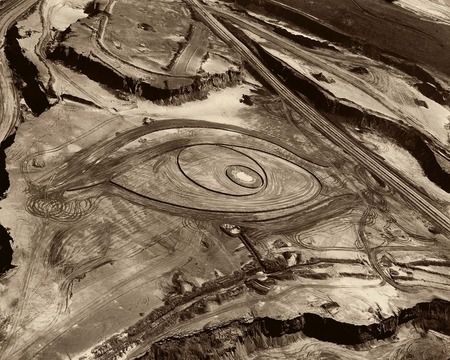IC w9 Equivalents and more - Vik Muniz
- HildeMaassen
- Mar 27, 2020
- 3 min read
Updated: Aug 15, 2020
While I am working on the text for the oral presentation I keep coming across other interesting works that are related to clouds. Suffers on the one hand but is also very inspiring.

Earlier I wrote about Stieglitz's equivalents and Richard Misrach's non-equivalents, but now I come across another series mentioned by Vik Muniz from 1995. He photographed the marble on the floor under the Stieglitz series at the modern art museum during an exhibition on Stieglitz's work.
In this interview with him, he tells how you came to the photos and how he created a moon with a piece of paper from the museum shop. He says about Stieglitz's photos that they are clouds in which you cannot recognize figures.
"When you look at a picture with a certain degree of ambiguity, your perception heightens it,"

He made another series with "clouds": Equivalent, 1998 where cotton balls represent the clouds. Here the clouds do look like figures. It shows the disfigurement of the rational.

In the Earthworks series, Muniz emphasizes the meaning behind the shapes and lines. He tries to connect the physical and reality world by displaying banal objects such as scissors, a saucepan, a key, a pipe from everyday life in the landscape.
"In the Pictures of Earthworks, I intend to consider Earth as a single repository for all ideas and concepts; the source of all human activity can only be reflected in the way it leaves traces in its immediate environment (VIK MUNIZ, 2009).
"Interesting phenomena occur when two or more rhythmic patterns are combined, and these phenomena well illustrate the enrichment of information that occurs when one description is combined with another" -Gregory Bateson What is interesting about Muniz's work is that he also feels the need to work on different scales, methods and scenarios simultaneously to keep my interest alive for what I do as a whole. During my class yesterday with Michelle, her question was how I saw all the things I did come together. The 3D models, maps, photos, gradients, graphic prints, sound, augmented reality, analog 4x5 images.
Muniz describes, and it could be about me: http://vikmuniz.net/library/the-beautiful-earth.
"At the same time I try to do very different and disconnected things, so that I miss one activity from another, without paying attention to the way in which ideas and concepts developed in one oeuvre instinctively penetrate into another, however it may be differs in material, scale and topics ". He tries to define his relationship with the earth by mapping the boundaries. In this series, he treats the earth as the only possible material, with its inexhaustible simplicity, flexibility and willingness to be shaped according to any human fantasy.
in the Pictures of Earthworks, my intention is to consider the earth as a single repository for all ideas and concepts; the source of all human activity can only be reflected in the way it leaves traces in its immediate environment. I wanted to take Plato's Cave out in the open. Earth was a theme, perhaps by then the only possible theme, the source of all things and the end of all intellectual and material achievements. The only material and place for man to act and leave traces of uneven importance and effect. A scarred earth that is slowly becoming an enormous residue of human significance, yet the only reflex of our pale presence in the universe, where we see ourselves big, brave and eternally beautiful, a beautiful earth.
What this conflation or equivalence of competing realities and illusions produces is a hybrid ‘thing’ that exists between meanings. Muniz says: “Meaning is like a disease: It keeps getting worse and worse.” And this monstrous, diseased ‘thing’ this physical aporia, that is produced is beyond any final meaning, even where it may seem to encompass the finality of meaning. (From a conversation with the artist, New York, July 7 1993)
Sources
BATESON, Gregory. Quote. Available at: https://www.brainyquote.com/quotes/gregory_bateson_321125[Accessed 27 March 2020]
CHUI, Karen. 2016. About Symbols: Earthwork by Vik Muniz. Available at: https://medium.com/@abbakarenresearchblog/earthwork-by-vik-muniz-386ae3d3f589 [Accessed 27 March 2020]
MUNIZ, Vik. 2009. The beautiful Earth. Rio de Janeiro. Available at: http://vikmuniz.net/library/the-beautiful-earth [Accessed 27 March 2020]
MUNIZ, Vik. 1993 / 2003.. The wrong Logician: or cats, and dogs fighting like clouds. Available at: http://vikmuniz.net/library/vik-muniz-the-wrong-logician-or-cats-and-dogs-fighting-like-clouds [Accessed 27 March 2020]
MUNIZ, Vik. Equivalents (The Museum of Modern Art) Kahn Academy. Available at: https://www.khanacademy.org/partner-content/moma/seeing-through-photographs/photography/v/vik-muniz-equivalents-the-museum-of-modern-art [Accessed 27 March 2020]











Comments